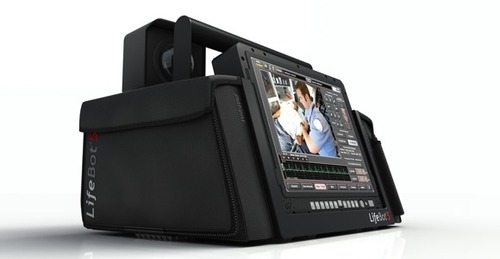Over a year ago, I wrote about a product called LifeBot. This technology provides a way to join the ED and prehospital teams as they work on patients. This involves special monitoring equipment in the ambulance (cameras and other telemedicine equipment), a special tablet computing system for data input and imaging, and equipment at the ED base station.
Using the original LifeBot system, medics could relay vitals and EKG data to the base station in real time, receive orders from emergency physicians, and send video feeds and photos from the ambulance.
LifeBot Technology has now released LifeBot 5, the next generation of this system. The unit is now portable, and can be taken out of the ambulance at the scene. It is ruggedized and weighs only 15 pounds, which isn’t bad for field medical equipment. The system now includes a web interface that can mesh with some electronic medical record systems.
Expect to see more improvements (a defibrillator is slated as the next addition) as well as competing products soon.
What does it cost, you ask? A lot! As always, it’s tough to get exact numbers. The LifeBot 5 should be about $20,000. However, this does not include equipment cost for the base station, which is at least that much, if not more!
Bottom line: Expect further progress in blending the prehospital and emergency department environments. More products like this will become available, extending the senses of emergency physicians and providing additional assistance to prehospital providers.
Related post: The “super ambulance” of the future
Website: http://www.lifebot.us/dreams/
Disclosure: I have no financial interest in Lifebot Technology

